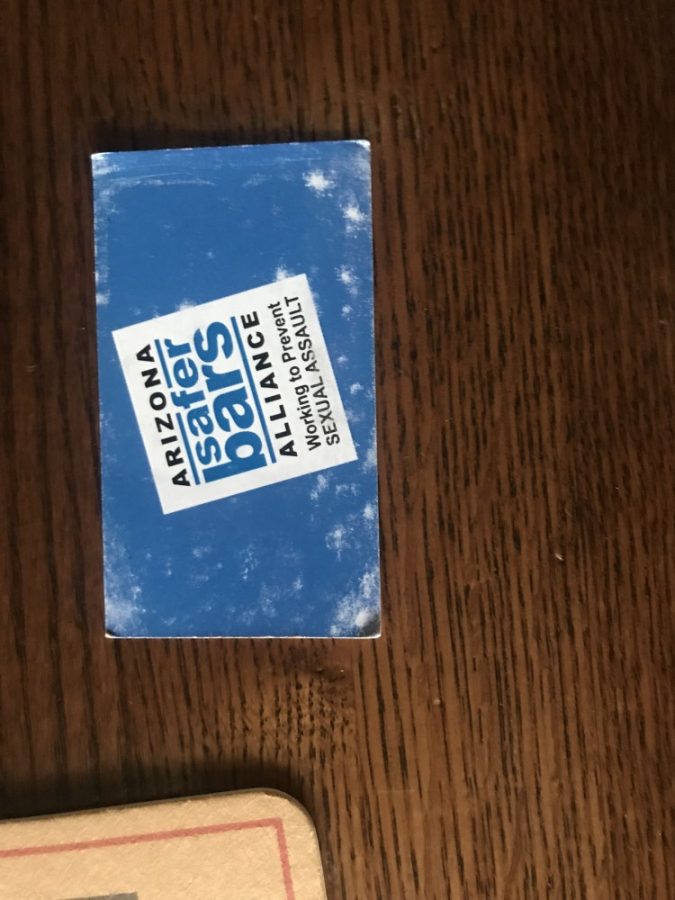The Mel & Enid Zuckerman College of Public Health and Arizona State University received a $3 million grant from the National Institutes of Health to implement the Arizona Safer Bars Alliance at bars surrounding the three main universities.
The Arizona Department of Health Services will take care of training bar personnel on prevention methods for sexual harassment in bars. The training goes deep into actions they should take, barriers they may face and how to overcome those barriers.
RELATED: New law grants sexual assault survivors more time to speak out
“We work with bar staff to identify barriers to intervention, because we know that just because you know these skills doesn’t necessarily mean that you’re always going to be able to use them,” said Elise Lopez, assistant director of the relationship violence program and co-investigator on the program.
The program’s research was developed through feedback from bar managers, staff members and community members that described the behaviors they see in bars.
“This is a bigger agenda, a bigger initiative of bringing key players in the state to figure out a multifaceted approach and figure out a safer way for alcohol consumption among university students,” said Mary Koss, UA regents professor of public health and co-principal investigator on the program.
According to Koss, police reports of sexual harassment are made all around town but are reported at a higher rate around college campus bars than anywhere else. This information is what reinforced their focus on university bars.
Their research found that it is not that the victims aren’t saying no, but rather that the perpetrators are not listening to the cues being emitted by the other person.
“It’s like when you’re drinking and driving,” Lopez said. “It’s harder to stop at a yellow light because the alcohol has impaired your ability to perceive those cues quick enough for your body to react.”
Although there are many different aspects of the program and they have a well-rounded training, the main emphasis on the training is demoting bystander behavior. The idea, in the end, is to encourage bar staff to attend and be willing and ready to intervene if needed. They have heard back from bar staff who said after the training they feel more confident in approaching the situation head-on.
“My students didn’t believe me that bystander behavior is so prominent,” Koss said. “So, they went to film a video in front of the Administration building where someone would lie down on the steps and they could not believe that no one came up to say anything.”
Koss said she’s seen similar things taking place in bars while they were conducting research. Patrons would see something knew was wrong but did not approach the situation. Lopez and Koss aim to change that.
Apart from the bystander behavior, Koss said she will measure the success of the program in four ways: increasing general knowledge, strategies for intervening, observing unwanted behavior and recognizing that unwanted behavior for what it is. A common sign often overlooked is that the victim likely knows the perpetrator.
“When you’re thinking of your safety, it’s not just about watching out for the weird stranger in the bar, but being able to trust your gut about someone who is being sexually aggressive towards you, no matter what that may be,” Lopez said.
Lopez and Koss emphasized that the aim of the program is not to make bars less fun by monitoring the sexual activity, but rather to make it a safer environment for patrons to not feel attacked or ridiculed.
“We are not here to tell the bars ‘turn the lights on and the music down,’ we simply want to discourage sexual misconduct from happening in those bars,” Lopez said.
Employees at bars like Good Oak have mentioned that it has not changed the ambiance of the bar and find the program helpful.
“It has made a difference in the way we interact with customers. We’ve become more hyper-aware of the happenings at the bar,” bartender Kyle Keller said. “When I go to bars that are trained in [ASBA], I feel safer and better.
Currently, according to Lopez, five bars in Tucson are trained in the Safer Bars Program: Hotel Congress, Good Oak, Sky Bar, Casa Film Bar and Downtown Kitchen + Cocktails. Some bars not trained in the Safer Bars Program may have financial obstacles holding them back, since bars have to pay their staff for taking the training. The aim, however, is to have as many bars under the Arizona Safer Bars Alliance as possible. There is even a bar in New York City that is trained in the Safer Bars Program.
“After six months, when we can measure what’s going on with the bars that didn’t receive training, they do eventually get training if they want it,” Koss said.
RELATED: UA alumna’s short film on sexual assault is featured on HuffPost
Posters stating that the bar is part of the program are hanging in bathrooms and windows, usually encouraging bar patrons to report any sexual misconduct and letting them know that the staff is there to help. Customers who wish to know if a bar has been trained can simply ask the staff or post on their social media. If they are not trained, customers can express their interest in the bar becoming part of the program.
Lopez said that “there’s plenty of opportunities for students to get involved in recruiting and encouraging bars to go through the Safer Bars program.”
Follow Ana Teresa Espinoza on Twitter








